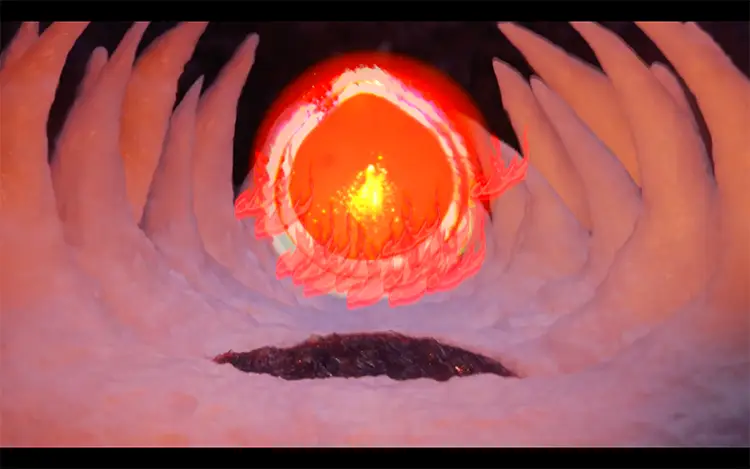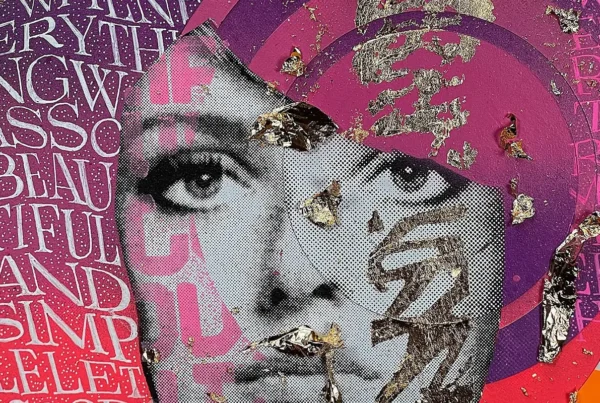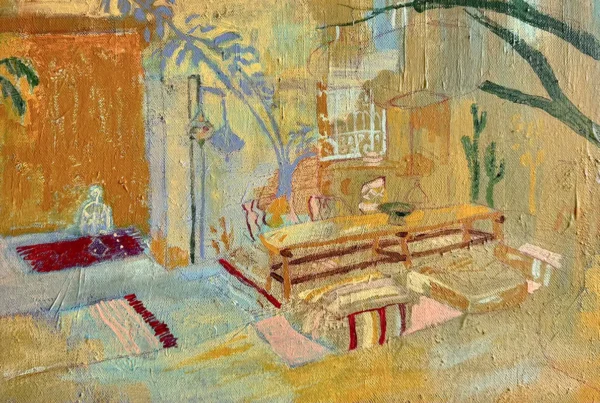“The story is supreme—a declaration that points to power.”
Between Worlds, Between Forms
DIRD, the collaborative identity of artists Rui Shi and Zijing Zhao, emerged from a chance encounter at the Royal College of Art in London. What began as experimental play with scraps of paper and miniature puppets soon evolved into a singular artistic vision shaped by their differing backgrounds—Rui with a foundation in theatre design and printmaking, and Zijing with a practice rooted in painting and contemporary art. These divergent starting points created a productive tension, allowing the duo to develop a hybrid practice that defies strict categorization. Their work exists in a state of fluidity, not only in medium but in concept, occupying a liminal space that thrives on flux and contradiction.
The duo’s fascination with alternate realities, storytelling, and transformation steers their creative impulses. Rui’s theatrical sensibility brings a spatial and narrative layering to their constructions, while Zijing’s painterly instincts offer a symbolic and speculative intensity. Together, they craft visual experiences that reject linearity and celebrate ambiguity. Their initial discovery of stop-motion animation served as a catalyst—this medium, defined by its fragility and repetition, allowed them to merge their skills while giving form to ephemeral, shifting worlds. Through this lens, making art became less about producing fixed objects and more about constructing environments where identity, myth, and embodiment are constantly in negotiation.
DIRD’s studio practice reflects the same state of suspended certainty that defines their work. Chaos is not only welcomed but embraced as a core part of the process. Their workspace is a collage of materials—crumbled paper, bits of clay, puppet limbs, wires, and screens. Disruption is folded into creation, with interruptions and technical glitches often becoming prompts rather than problems. For DIRD, the act of making is not about refining toward perfection but about honoring instability, multiplicity, and the strange beauty of the unresolved.
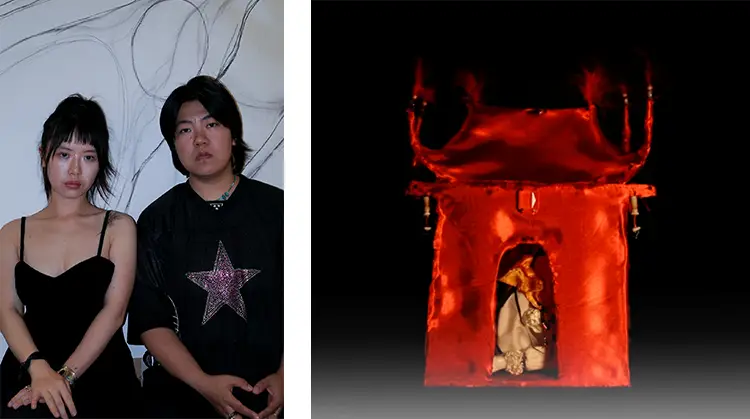
DIRD: Where Myths Refuse to End
DIRD’s artistic voice reverberates through a language built from fragility, disruption, and rebirth. Their visual lexicon blends analog and digital, flesh and code, paper and steel. In their pieces, characters and landscapes don’t remain static—they flicker, dissolve, and reconfigure. This constant mutability is rooted in their conceptual core: a refusal of binaries, whether in gender, form, or narrative. Rather than retelling ancient stories as-is, DIRD fractures them open, rearranging their pieces into new configurations that resist finality. Myths, for them, are not fixed scripts but raw materials to be reassembled in infinite ways.
A recurring figure within their work is Princess Miaoshan, a mythological character who resists patriarchal authority, dies by fire, and is reborn as the bodhisattva Guanyin. This narrative became the seed for Mountain of Flames, a stop-motion animation that has expanded over time into a multi-work exploration of cyclical identity and resistance. The artists portray Miaoshan not as a static heroine, but as an evolving symbol of queer transformation. Her body—rendered as a fragile puppet—flickers in and out of coherence, reflecting the instability of form itself. In this myth, they find a prototype for stories that transcend gender, linearity, and control.
Their interest in myth is far from nostalgic. While traditional storytelling often enforces hierarchy and resolution, DIRD approaches mythology as a space for disruption and play. Influences from Asian spiritual traditions, especially Buddhist and Daoist cosmologies, merge with feminist and queer theory to question dominant narratives. Thinkers like Donna Haraway and Legacy Russell inform their approach to embodiment and technology, while visual artists such as Apichatpong Weerasethakul and Cao Fei inspire their merging of fantasy, memory, and socio-political critique. The result is an art practice where myth becomes a site of resistance, and the body is always in the process of becoming.
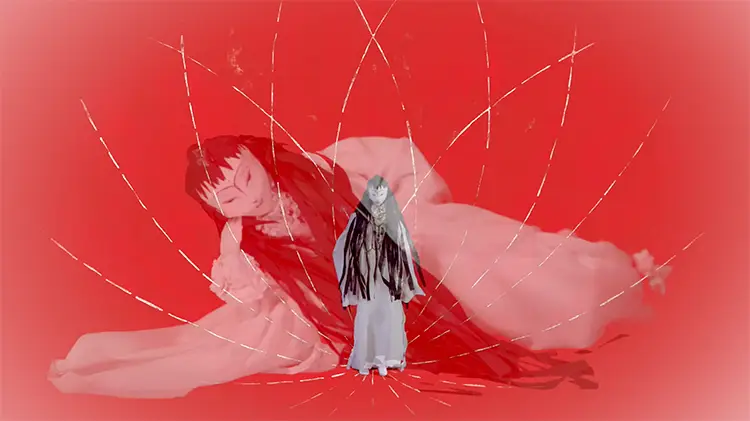
Rebuilding the Burnt Body
At the heart of DIRD’s creative output is Mountain of Flames, an ongoing series that has grown into a constellation of related works. Initially conceived as a stop-motion animation in 2020, the piece takes the ancient story of Princess Miaoshan and twists it into a commentary on power, sacrifice, and transformation. By using fragile paper puppets, the duo underscores the tension between vulnerability and endurance. Miaoshan’s repeated death and rebirth become metaphors for identity that refuses containment, constantly shifting between destruction and reconstruction. Her body, repeatedly undone and remade, becomes a vessel through which the artists question what it means to survive in a world that demands obedience.
Miaoshan (2023), a later work within the same universe, deepens this exploration. Structured as a looping video, it resists narrative closure and foregrounds repetition as a form of resistance. The piece opens with a defiant proclamation: “The story is supreme.” But this supremacy is immediately interrogated. The patriarchal, linear tale is dismantled as the protagonist’s body begins to refuse its assigned destiny. In this retelling, the myth is not simply revised—it is destabilized. The reborn Miaoshan withholds obedience, asserting autonomy through cyclical returns and slow decomposition. Ritual and decay become tools for unmaking dominant narratives.
The Mountain of Flames project has expanded beyond animation to include browser-based 3D environments, such as The Mountain of Reincarnation, and gallery installations. Each iteration builds on the last, refusing closure and embracing evolution. Set within landscapes scarred by ecological and societal collapse, these works imagine new terrains where queerness is not just an identity but a method of imagining. Through digital interfaces, sculptural fragments, and flickering motion, DIRD invites viewers into a speculative space where myth is rewritten, and utopia is glimpsed through the ashes of old worlds. The body, once burned, becomes the blueprint for futures that do not yet exist.
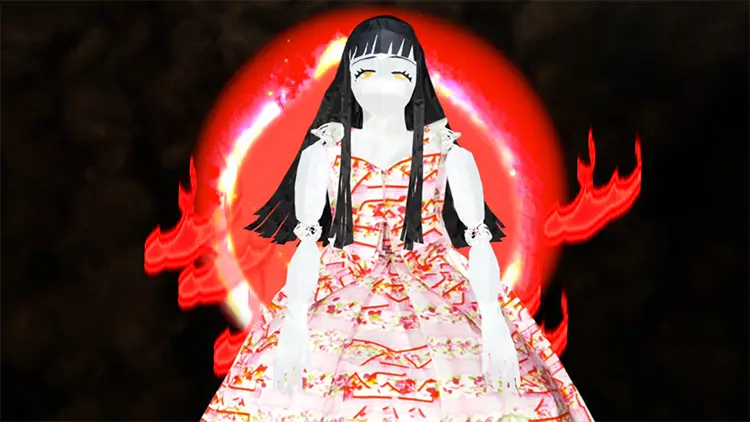
DIRD: Animation as Afterlife
For DIRD, animation is more than a medium—it’s a philosophy of making. Their approach to material and digital forms centers on the idea of animating matter into a kind of afterlife. Whether working with paper, steel, clay, or code, the focus remains the same: to breathe instability into static things. Animation, especially stop-motion, offers a space where mistakes are not merely accepted but generative. Each glitch, hesitation, or repetition becomes a way to speak to themes of disintegration and renewal. In their work, animation does not serve to create illusion but to expose the seams and sutures that hold together every constructed world.
The duo’s early foray into stop-motion was not just a technical choice but an artistic epiphany. It aligned perfectly with their interest in fragility and speculative storytelling. But they have since expanded their vocabulary to include painting, sculpture, interactive media, and digital installations. The choice of medium always follows the demands of the narrative. A myth might emerge in the form of a puppet or demand to inhabit a browser window. While the materials change, the underlying drive remains constant: to explore how objects, bodies, and narratives might flicker between dissolution and coherence.
Their current dream project, Every Videogame Depicts the End of the World, encapsulates this ethos. Conceived as a large-scale installation, it aims to unite sculpture, video, and interactivity to challenge the apocalyptic tropes prevalent in gaming and media. Rather than depicting a single cataclysm, the work will frame apocalypse as an ongoing condition—one that is ecological, social, and psychological. Within this imagined environment, queer temporality and digital aesthetics will coalesce into a living, glitching landscape. For DIRD, the end of the world is not an ending at all, but a beginning: the moment when something new starts to shimmer into being.
